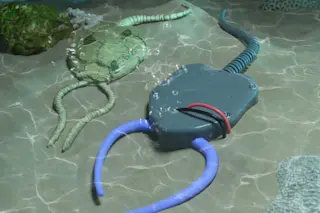Four decades after Apollo, we still know the folks at NASA as the people who made it to the moon, but they aren’t just about rockets: This year, nearly $2 billion of the agency’s $17 billion budget is slated for aeronautics and earth-science research. While the “space” part of NASA gears up for a long-delayed manned return to the moon, the agency’s down-to-earth divisions are quietly yielding some practical advances.
Faster—and quieter—airplanes NASA’s hypersonics research is pushing aviation speed limits with ultrafast scramjets (supersonic combustion ramjet engines): In 2004, the agency’s unmanned hypersonic X-43A craft briefly reached Mach 9.6 (about 7,000 miles per hour)—a record for an air-breathing engine. The military hopes to use scramjets to send missiles around the globe; they could also launch satellites more cheaply.
For commercial aviation, the tooth-rattling noise of sonic booms is a significant problem. “To fly these aircraft over land without restrictions, we ...















